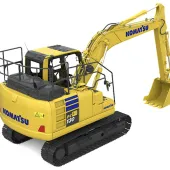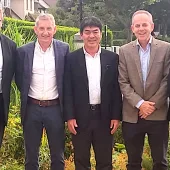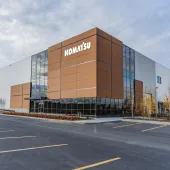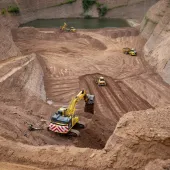First Komatsu D61PXi-23 dozer sold to Verhelst

Construction firm takes first dozer equipped with latest system for intelligent machine control
KOMATSU Europe International recently sold the first new D61PXi-23 bulldozer equipped with the company’s latest system for intelligent machine control, a unique technology developed jointly with Topcon Corp.
The medium-sized Komatsu dozer was sold in July by BIA, Komatsu’s distributor for Belgium, to the Verhelst Group, located in Oostende, Belgium.
The intelligent machine-control system featured on the D61PXi-23 is factory integrated and offers full auto-blade control and blade load control. It is designed to help Komatsu customers enhance their productivity, reduce operational costs and improve job site safety.
The Verhelst Group specialize in activities such as road building, demolition and recycling, and already include 10 Komatsu dozers in their fleet.
Johan Verhelst, head of the group, has a keen interest in new and reliable technologies. ‘Our mission in the construction industry is to be pioneers and a sustainable company,’ he said.
In 2012, Topmix, part of the Verhelst Group, were the first customers in Belgium to acquire a HB215LC-1, Komatsu’s ground-breaking hybrid excavator.
Komatsu’s intelligent machine-control system was unveiled for the first time in April 2013 at the bauma fair in Munich. When installed on a dozer, it offers from ‘rough’ to ‘finish’ grading performance through the use of a highly durable and accurate off-blade sensor package, validated to Komatsu’s quality and durability standards.
The complete system includes an improved GNSS receiver and control box, and a GNSS antenna. For improved safety and efficiency, the antenna, mast pole and cables have been removed from the blade where they used to be located, and are now fully integrated to the machine.
The antenna is on the top of the cab and provides accurate data collection, regardless of actual blade position.
With Sitelink3D, Topcon’s advanced communications management system, dozing progress can be sent to the site manager in a remote office, and updated design data can be sent from there to the dozer in the field quickly and efficiently, without the need to dispatch personnel.









